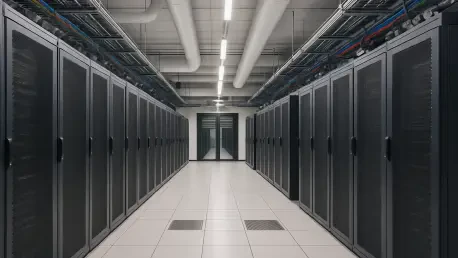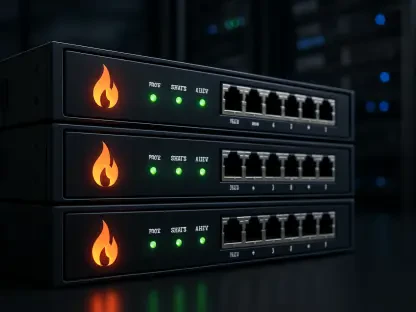In a world where data drives nearly every aspect of modern life, the demand for faster, more efficient processing solutions has never been greater, especially in regions often overlooked by major tech investments. Small cities across the United States are stepping up to meet this challenge, and one such place, located in the heart of Nebraska, is making a bold move to position itself at the forefront of technological innovation. This community is on the verge of transforming into a regional hub for advanced data services. With the recent approval of a significant land sale by the local city council, a cutting-edge project is set to redefine how data is managed and accessed locally. This development not only addresses an unmet need among businesses and organizations but also highlights the growing importance of strategic infrastructure in smaller markets. As technology continues to evolve, initiatives like this could serve as a blueprint for others aiming to bridge the digital divide.
Transforming Local Infrastructure
Strategic Location and Market Needs
The decision to establish a state-of-the-art data facility in this Nebraska city stems from a meticulous market analysis identifying a critical gap in advanced data services for local enterprises. Positioned near key energy infrastructure provided by the Nebraska Public Power District and accessible fiber optic networks, the chosen site offers unparalleled advantages for data center operations. Spanning approximately 16 acres in a designated technology corridor, the location ensures seamless connectivity and power reliability, which are vital for high-performance computing. This strategic placement not only addresses the immediate needs of businesses in the area but also anticipates future growth in demand for digital services. By situating the facility in close proximity to its users, latency issues are minimized, paving the way for real-time applications that are increasingly essential in today’s fast-paced economy. The foresight in selecting this spot underscores a commitment to fostering technological advancement in a region poised for transformation.
Community Support and Economic Impact
Beyond its ideal location, the project has sparked significant enthusiasm among local stakeholders, with numerous businesses and organizations expressing keen interest through non-binding letters of intent to utilize the facility. This wave of support highlights the potential for substantial economic benefits, as the data center is expected to attract new investments and create job opportunities in the area. The collaboration with the city and the involvement of a reputable engineering firm from Omaha ensure that the design and construction meet the highest industry standards, further boosting confidence in the initiative. Additionally, the facility’s focus on serving multiple tenants rather than a single large entity means that a diverse range of local and regional companies can access cutting-edge technology without the prohibitive costs of building their own infrastructure. This democratization of advanced data services could redefine economic competitiveness for smaller markets, setting a precedent for similar developments across the country.
Edge Computing Advantages
Redefining Data Processing with Proximity
At the core of this Nebraska project lies the concept of edge computing, a transformative approach that processes and stores data closer to its source, significantly reducing latency and bandwidth usage compared to traditional centralized cloud systems. This decentralized model is particularly beneficial for industries requiring instantaneous responses, such as industrial automation, autonomous vehicles, and medical imaging. By situating a 40,000-square-foot facility in the heart of the community, set to be operational by early 2027, the initiative ensures that data travels minimal distances, resulting in faster and more efficient operations. The emphasis on proximity also addresses the unique needs of local markets, offering tailored solutions that enhance performance for real-time applications. As digital demands continue to escalate, such localized infrastructure becomes a cornerstone for innovation, enabling businesses to stay ahead in a competitive landscape while consuming less energy than mega data centers.
Tenant Benefits and Operational Excellence
The upcoming data center promises a host of advantages for its future tenants, setting a new standard for operational efficiency and security in smaller regions. With features like top-tier redundancy, flexible integration options, and customized power management, the facility is designed to meet diverse organizational needs, from AI-driven platforms to private network configurations. Key strengths include robust risk mitigation strategies to protect against outages and cyber threats, alongside expert support services that simplify complex leasing arrangements. Energy efficiency is another critical focus, achieved through innovative aggregation techniques that optimize resource usage. These combined benefits not only enhance the digital capabilities of tenants but also contribute to broader community goals by fostering a sustainable and resilient technological ecosystem. As the project moves forward, it stands to deliver measurable improvements in how local entities operate within an increasingly connected world.
Looking Back at a Groundbreaking Initiative
Reflecting on the journey, the approval and subsequent development of this edge data center in Nebraska marked a pivotal moment for the region’s technological landscape. The strategic selection of the site, bolstered by local support and expert design, laid a strong foundation for what became a beacon of innovation in a smaller market. Moving forward, the focus should shift to leveraging this infrastructure to attract diverse industries, ensuring that the facility’s cutting-edge capabilities are fully utilized. Exploring partnerships with educational institutions to train a skilled workforce could further amplify the economic impact. Additionally, continuous investment in cybersecurity and energy-efficient practices will be essential to maintain the center’s competitive edge. This project not only demonstrated the power of forward-thinking urban planning but also offered a scalable model for other communities to adapt, proving that even smaller cities could play a significant role in the global digital economy.









